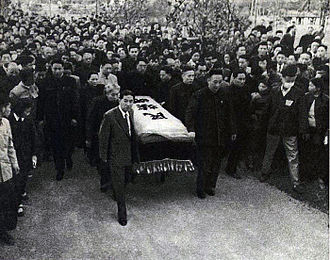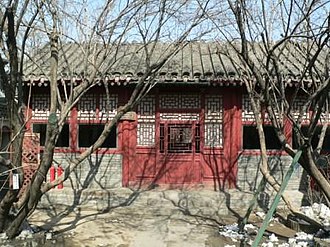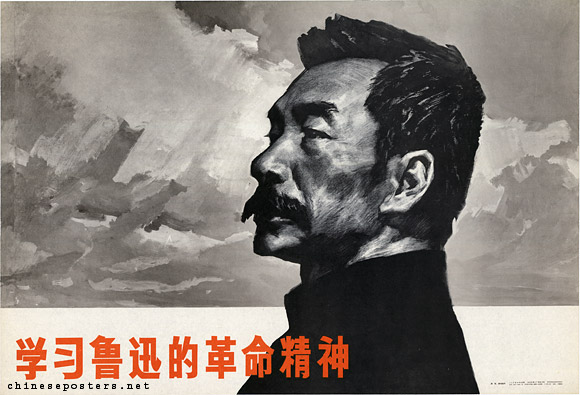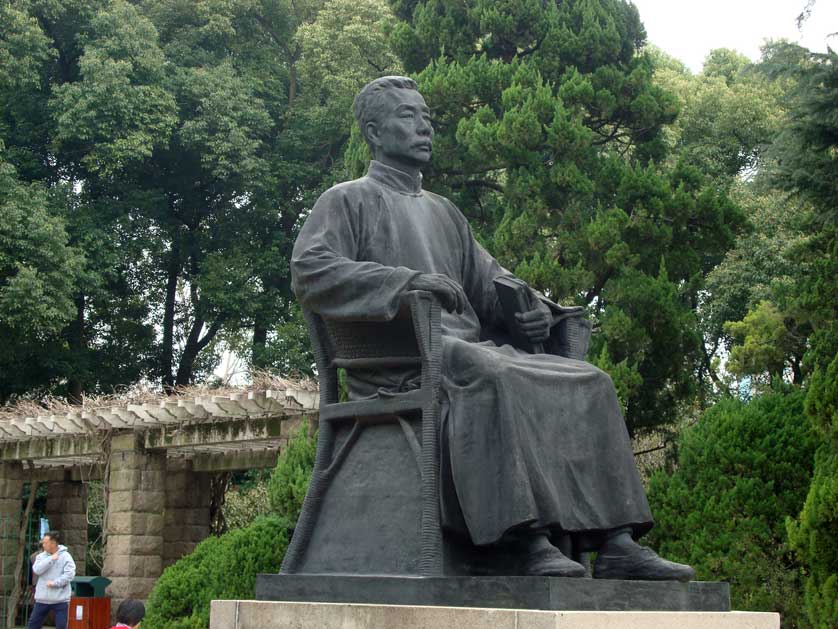
Legacy during Mao's rule
Shortly after Lu Xun's death, Mao Zedong called him "the saint of modern China", but used his legacy selectively to promote his own political goals. In 1942, he quoted Lu out of context to tell his audience to be "a willing ox" like Lu Xun was, but told writers and artists who believed in freedom of expression that, because CCP areas were already liberated, they did not need to be like Lu Xun. After the People's Republic of China was established in 1949, CCP literary theorists portrayed his work as orthodox examples of communist literature, yet every one of Lu's close disciples from the 1930s was purged. Mao admitted that, had Lu survived until the 1950s, he would "either have gone silent or gone to prison".

Party leaders depicted him as "drawing the blueprint of the communist future" and Mao
Zedong defined him as the "chief commander of China's Cultural Revolution," although Lu did not join
the party. During the 1920s and 1930s Lu Xun and his contemporaries often met informally for
free-wheeling intellectual discussions, but after the founding of the People's Republic in 1949 the
Party sought more control over intellectual life in China, and this type of intellectual
independence was suppressed, often violently.
During the Cultural Revolution, the CCP both hailed
Lu Xun as one of the fathers of communism in China, yet ironically suppressed the very intellectual
culture and style of writing that he represented. Some of his essays and writings are now part of
the primary school and middle school compulsory curriculum in China.

Influence on modern Chinese literature
Lu Xun's importance to modern Chinese literature lies in the fact that he contributed significantly to nearly every modern literary medium during his lifetime. He wrote in a clear lucid style, which was to influence many generations, in stories, prose poems and essays. Lu Xun's two short story collections, Nahan (Call to Arms) and Panghuang (Wandering), are often acclaimed as classics of modern Chinese literature. Lu Xun's translations were important at a time when foreign literature was seldom read, and his literary criticisms remain acute and persuasively argued.

Overseas recognition
The work of Lu Xun has also received attention outside China. In 1986, Fredric Jameson cited "Diary of a Madman" as the "supreme example" of the "national allegory" form that all Third World literature takes. Gloria Davies compares Lu Xun to Nietzsche, saying that both were "trapped in the construction of a modernity which is fundamentally problematic". According to Leonardo Vittorio Arena, Lu Xun cultivated an ambiguous standpoint towards Nietzsche, a mixture of attraction and repulsion, the latter because of Nietzsche's excesses in style and content. A major literature prize in China, the Lu Xun Literary Prize is named after him, Asteroid (233547) 2007 JR27 was named after him, A crater on Mercury is named after him.